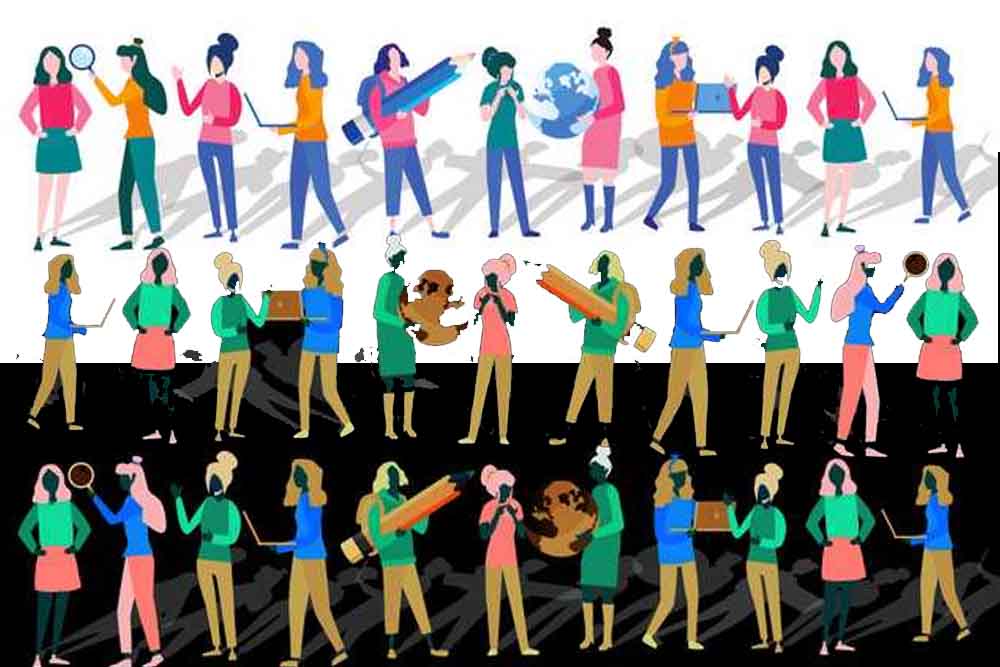A RECENT study by LinkedIn identifies the Philippines as having the widest gender gap in Science, Technology, Engineering, and Mathematics (STEM) employment in the Asia Pacific region, at 22 percent. It sits along with the United States and the United Kingdom in this percentile ranking.
The gender gap in STEM fields continues to persist globally, with women being significantly underrepresented. While women make up 58.8 percent of the workforce in non-STEM fields, their representation drops to only 36.3 percent in the STEM workforce. Similar disparities are observed in other countries in the Asia Pacific, including Australia (21 percent), Singapore (15 percent), and India (5 percent).
In the Philippines, while women accounted for 41 percent of STEM graduates in 2017, only slightly more than 3 out of 10 (36.6 percent) joined the STEM workforce a year later. The drop in representation between graduation and workforce entry has been consistently around 11 percent but increased to 14 percent in 2021.
“While action is already being taken to close the gender gap, we need to go further and faster to level the playing field. Enabling more women to enter and advance in rapidly growing sectors such as STEM will help make them more resilient to external economic shocks,” Atul Harkisanka, Head of Emerging Markets and Country Manager for the Philippines of LinkedIn said.
Data from LinkedIn, which was highlighted in the World Economic Forum’s Global Gender Gap Report 2023, sheds light on this issue and reveals that the Philippines faces the widest employment gap in STEM between men and women in the Asia Pacific region. This article examines the data, emphasizing the importance of promoting gender equality in the Philippines’ STEM workforce.
“Furthermore, our data shows that women tend to stay in STEM if they have role models to look up to. Organizations can create mentoring and training programs for women in STEM, where they can support women to stay in the workforce and further their careers, but also provide invaluable guidance and support networks, facilitating a path towards leadership roles through the influence of inspiring role models.,” he added.
LinkedIn’s Data highlighted specific and significant trends.
First, graduates versus the workforce. Although women globally are graduating with STEM degrees, a significant number are not entering the STEM workforce. The sharpest decline in female representation occurs between graduation and entering the workforce, with this disparity continuing as women progress in their careers.
Second, the absence of female role models in the STEM industry contributes to the decline of women working in this field. LinkedIn’s data shows that countries with a less significant decline in female representation from graduation to workforce entry tend to have minor gender gaps in STEM jobs. For instance, Singapore, India, and Italy have smaller drops in female representation (8 percent, 4 percent, and 10 percent, respectively), resulting in negligible gender gaps in STEM employment (15 percent, 5 percent, and 12 percent, respectively). In contrast, countries like the Philippines (14 percent), Australia (17 percent), and the United States (20 percent) exhibit higher drops in female representation post-graduation, leading to wider gender gaps in STEM employment.
STEM roles are among the fastest growing and most in-demand professions, offering resilience to economic pressures. However, the underrepresentation of women in these fields hinders their ability to benefit from industry advancements. The Global Gender Gap Report and LinkedIn’s data emphasize the need for systemic change to create fair and equal workplaces, ensuring women’s careers are future-proof and resilient to labor market uncertainties.
To bridge the gender gap in STEM, it is crucial to implement measures that promote gender equality in the workplace. LinkedIn has taken a step in this direction by releasing free LinkedIn Learning courses that support women’s career progression. By collectively addressing the underrepresentation of women in STEM and providing them with the necessary support and resources, the Philippines can pave the way for a more inclusive and prosperous future in STEM fields.
“Inclusive hiring practices, visibility of women in top jobs, and upskilling and career growth opportunities for women, particularly in high-growth and high-earning sectors like STEM, will help correct this worrying trend, but we need to act now,” Harkisanka warns.





